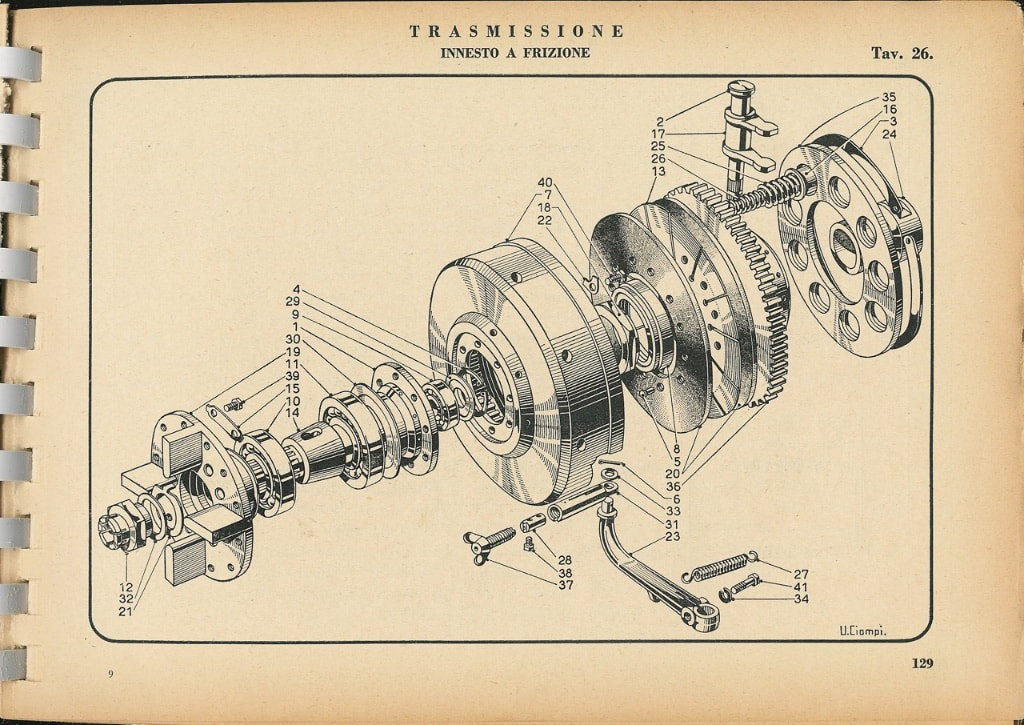|
Reading technical drawings is not everyone's interest. Our appreciation for the cars is more often in driving them or working on them. But the Lancia drawings give one an insights into the thinking behind them - what was on their mind, what did they study, how did they resolve things. Its not for everyone, but it can give understanding to why things are so well worked out in their cars- things just don't seem to happen by accident. They are well resolved. And that happened at many stages along the design and construction of the cars; the drawings are one part of a larger chain of operations. Make no mistake - Lancia - both in their engineering, construction and also their design, used what one might call "big firm" standards (like Fiat, or other major manufacturers) for their products even if made in small numbers. For example, there is a very detailed engine bay and chassis drawing for the Aurelia B50, an incredible drawing about 6' long, that must have taken weeks to resolve - all for a production run of some 800 chassis. They never cut a corner in their products - and their drawings are all carefully and meticulously done. This became first evident in the Aurelia parts books, where exploded isometrics (orthogonal projects, which remain dimensionally true) revealed the overall assembly. It became clear that the Aurelia parts books were more interesting than the later ones, as the drawings were more artful - illustrated originally with pen and ink. Rationality came to the later models, with Fulvia and Flavia parts books as mere technical documents. The best piece technical documentation (including its drawings) was the workshop manual for the 3Ro truck, put out 1939-1940. Likely commissioned by Italian military, the book is about 400 pages, with lots of illustrations (including 6 pages on how to set up your diesel injection test bench, and about 20+ pages of special tools); the highlight are some 12 color technical drawings (many are foldouts) that are just superb. I was turned on to this book by an Italian ex-Fiat executive who sold me a number of Lancia truck parts books (used for research!) and he told me "you simply have to have this", bent my arm, and sold it to me. Couldn't be better. Lastly, there are the factory drawings in the archives in Torino. These are the most esoteric, and for those not trained in reading these kinds of drawings, the hardest to appreciate - but they are (to these eyes) often the most interesting. It is possible to trace (sometimes) to see what was tried and abandoned, and even how things evolved over time. While for some these can be the driest of all, in other light they provide insights into the design room where our dear cars were dreamed up and very carefully executed. One thing to note about Lancia drawings is that technical excellence was reflected not only in the level of definition (perhaps common to other manufacturers of scale), but that things were worked out in detail on the drawings - there was no "lets figure it in the shop". Things were studied, and resolved - likely changed with input from the shop floor, but the drawings "held the course". Two other interesting things about them - first, the revisions and notes give indications as to what they were thinking and what changed. A most interesting example was the adoption of De Virgilio's revisions to crankshaft balancing for the Aprilia and Ardea - his studies were completed in December of 1947, and the changes to the drawings were February of 1948. You can almost feel the revision happening. In addition, Lancia cared about their drawings, and hired highly skilled draftsmen. This can be seen in the delicacy of the linework, and the little details which would not be part of a production house (say Fiat), but were part of the designer's code of the time. Thoughtful design engineers put their ideas down onto paper - and traces of that can be seen.
Lastly, some of the drawings (especially the studies) are lovely to look at. They are compositionally well constructed, and clear. All in all, if one has the patience, Lancia drawings are yet another way to understand the cars and why they are so interesting.
0 Comments
Leave a Reply. |
CategoriesArchives
July 2023
|













